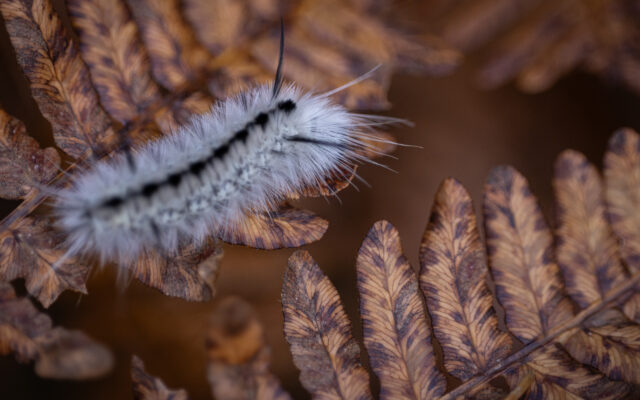
Check your boots before hiking in Maine — here’s why
By Aislinn Sarnacki
We’d been hiking for three miles before I started to feel a prickly sensation at the top of my foot near my big toe. It felt like something small, like a pine needle poking into my skin, so I ignored it.
After another quarter of a mile, it was only getting worse, so I stopped in the middle of the trail and pulled off my boot. A brown stain marked my sock, right where I felt the discomfort. Puzzled and worried that I was bleeding, I removed my sock — but my foot looked normal, maybe a bit pink.
I upended my boot, searching for debris. Out rolled a smooshed caterpillar.
The night before, I’d left my boots outside the door of our camper, and the caterpillar must have crawled inside.
My first instinct was to feel bad for it. I’ve always had a soft spot for animals, big or small. When I was a little girl, I held an elaborate funeral for a ladybug I found on my bedroom window sill. Within me, that sentimentality is still alive and well.
Upon inspection, the caterpillar was that of a hickory tussock moth. Covered in long, white and black hairs, these caterpillars are common throughout Maine in the summer and fall. In fact, we’d seen hundreds of them along the trail that day, and I’d remarked upon it.
“Good thing those aren’t caterpillars that cause rashes,” I had commented while pointing out half a dozen of them denuding a wild blueberry bush.
Oh how wrong I was.
For the past few years, I’ve been worried about a different kind of caterpillar: the brown-tail moth. Making headlines, this species has spread throughout Maine, stripping oak and birch trees and causing people to break out in terrible, itchy rashes. Their hairs can even cause respiratory problems.
A supervillain of the caterpillar world, the brown-tail moth has eclipsed all others, lulling me into a false sense of security. My faulty logic has been: if it’s not a brown-tailed moth caterpillar, it’s harmless. That, of course, is hogwash.
The hickory tussock moth caterpillar (Lophocampa caryae) can indeed cause problems. Their hairs are barbed and contain an irritating substance that causes some people to have an allergic reaction.
A 2001 study at the Pittsburgh Poison Center analyzed 365 human exposures to the tussock moth caterpillar over a two-year period. Routine treatment included removal of the hairs and the administration of antihistamines (for allergic reactions) and corticosteroids.
“Spines may be hollow, barbed or branched, connected to a venom gland at its base (Megalopyge) or solid and function as a mechanical irritant,” the study states.
Great. Those hairs or “spines” had been crushed into the top of my foot for miles, and I was starting to feel the effects.
Over the course of the next day or so, my foot swelled and developed a bumpy rash of tiny blisters that itched horrifically — especially at night. Multiple health organizations liken the reaction to a poison ivy rash, and I agree.
It looked ghastly, and felt worse.
Did I send a photo of my zombie foot to friends? Yes. Will I publish it in the newspaper? No. What if this is the only column you’ve ever read of mine? I’d rather not be remembered that way.
On the plus side, I no longer feel bad for the caterpillar. At least he went down swinging.
After about a week of anti-itch cream — plus a session of me attempting to remove tiny caterpillar hairs from my skin with packing tape — my foot is back to normal. No real harm done. But the experience taught me to look in my hiking boots before shoving my feet into them.
We may not have scorpions in Maine, but our caterpillars aren’t messing around.